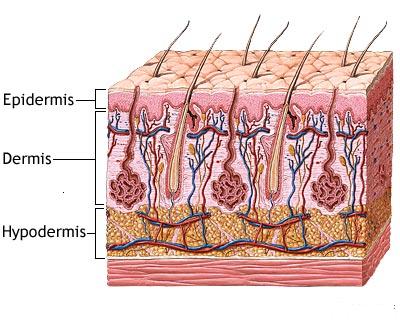Scientists have discovered a unique mechanism for restoring human skin

One of the serious consequences of diseases such as diabetes is the extremely slow healing of even the smallest and minor scratches and burns.
The process is often complicated by suppuration and ulceration. Previously, doctors assumed that when healing skin wounds, new cells appear when cells of hair bulbs (follicles) and untouched cells located on the edge of the damaged area are divided.
But a new study by the University of Michigan Health System showed that a key role in the process of wound healing is played by sweat glands, the very ones that help the body cool down after physical exertion or on a hot day. The human skin is literally stuffed with millions of these miniature exocrine organs.
"Ulcers on the skin, including those caused by diabetes or bedsores, and other non-healing wounds, are a huge burden for the entire health care system," says study lead author Laura Rittie, "to fight them in the US alone, billions of dollars are spent each year And this price only increases, and efficiency stands still. "It was obvious that something was not working and it was time to look for new solutions."
To study the processes of tissue regeneration in humans, physicians lightly burned a patch of skin on the forearm of 31 healthy patients. After that, for a week the researchers took particles of damaged tissue (i.e., a biopsy) to track the physiological processes in the outer layer of the skin (epidermis).
The process of wound healing was assessed using immunohistochemistry and three-dimensional computer modeling of damaged areas.
During the experiments, it was found that the exocrine sweat glands are a repository of regional stem cells that can quickly repair damaged tissues. That is, new cells literally "rise" from under the wound.
Researchers are confident in their conclusions, as they found that the processes of the release of progenitor cells from the gland and the formation of a new layer of the epidermis go in parallel with almost identical rates.
"It may seem surprising that such an important function of sweat glands is only open now," says Dr. Ritti, "but this is understandable: these exocrine organs are unique to primates, including humans, and are absent in most other mammals, including laboratory animals. Namely, the latter are most often used to study wound healing processes. "
The discovery of American scientists has shown that human skin has a unique mechanism of regeneration (self-healing), which differs from all similar processes known for mammals. But, unfortunately, at the moment, the deep molecular mechanisms of the work of sweat glands have not been sufficiently studied, so it is still difficult to advance further.
Scientists hope that their unique research will attract more attention of experts and investors to these exocrine organs, which is extremely important for the intensive development of such a promising direction of medicine.
After all, it is now necessary to understand why the natural processes of skin regeneration are disturbed in certain diseases and how to influence the slowing or complete stoppage of these processes. Only after this it will be possible to talk about the creation of highly effective narrowly targeted therapy for each individual patient.
The results of the study of Americans are published in the edition


Comments
When commenting on, remember that the content and tone of your message can hurt the feelings of real people, show respect and tolerance to your interlocutors even if you do not share their opinion, your behavior in the conditions of freedom of expression and anonymity provided by the Internet, changes Not only virtual, but also the real world. All comments are hidden from the index, spam is controlled.